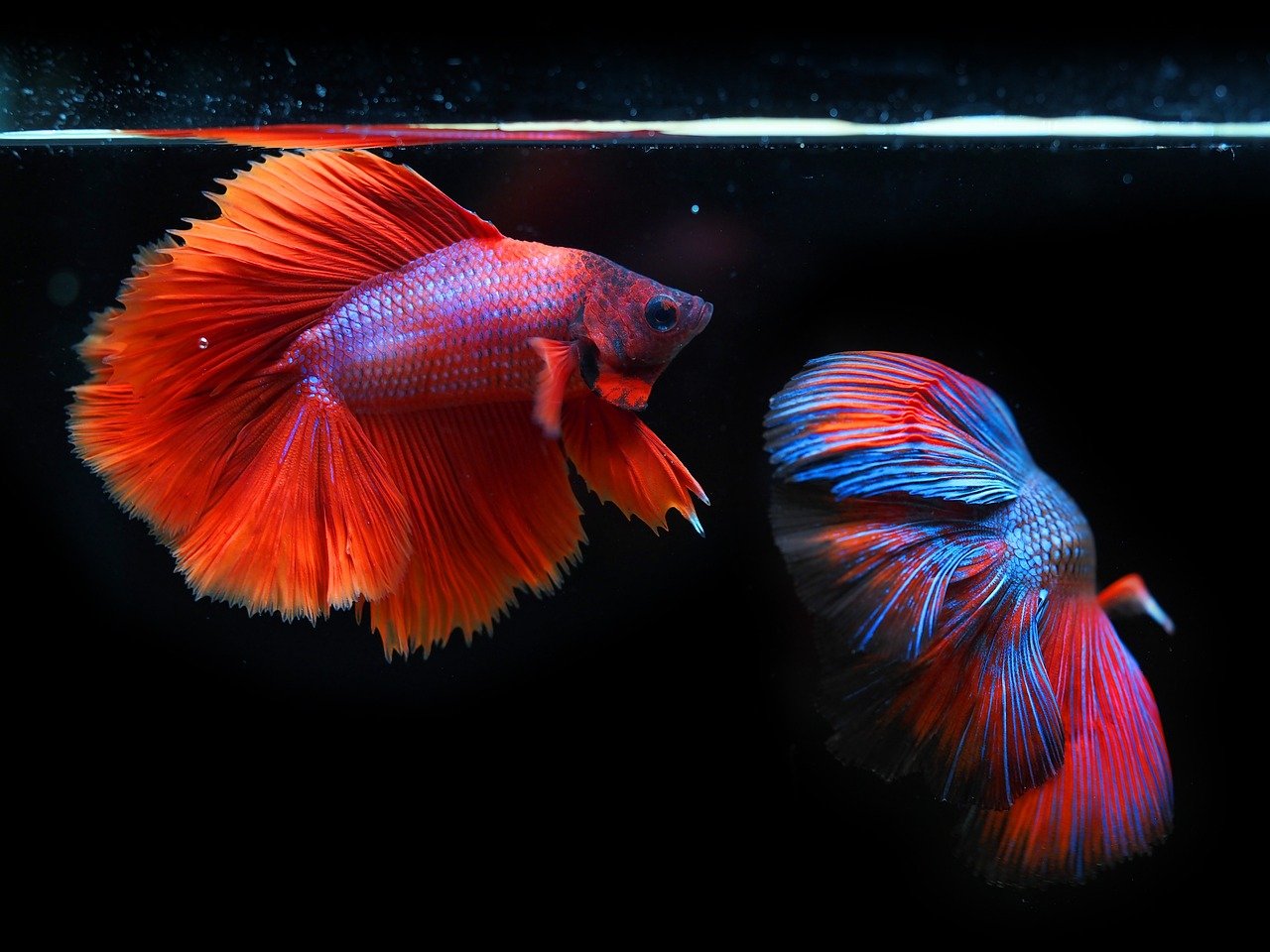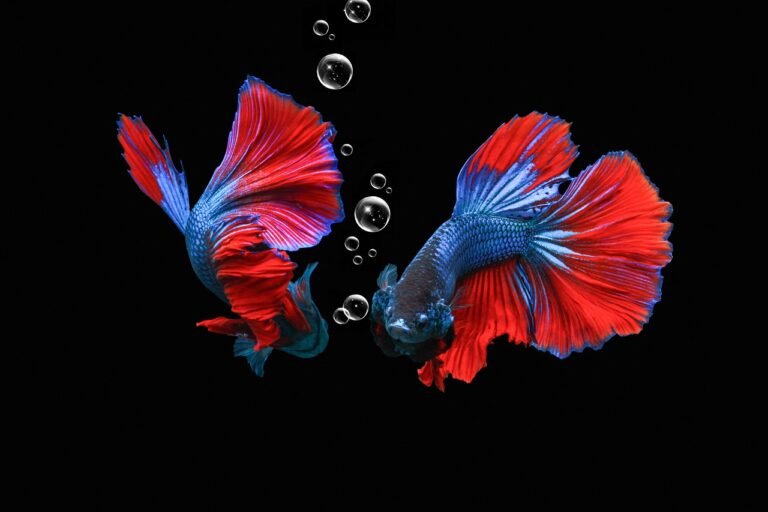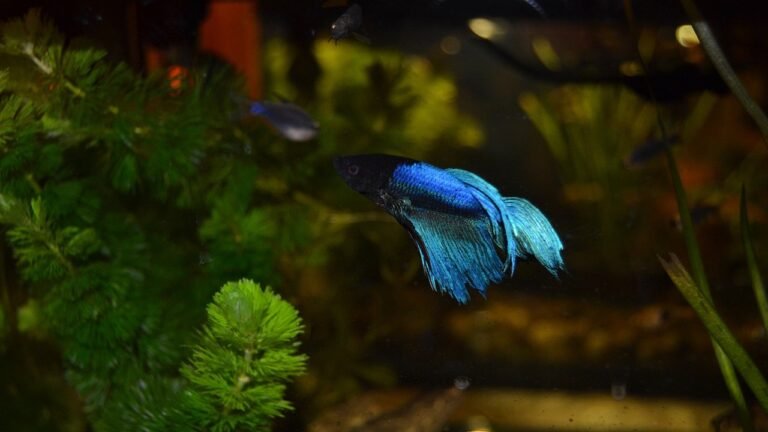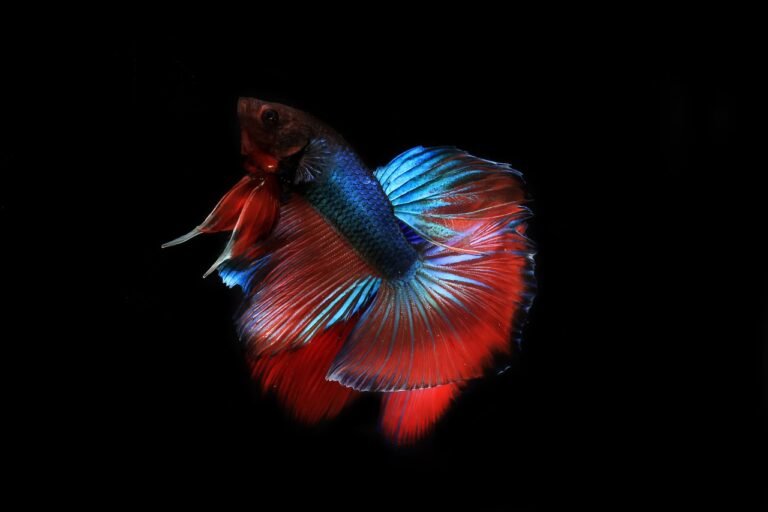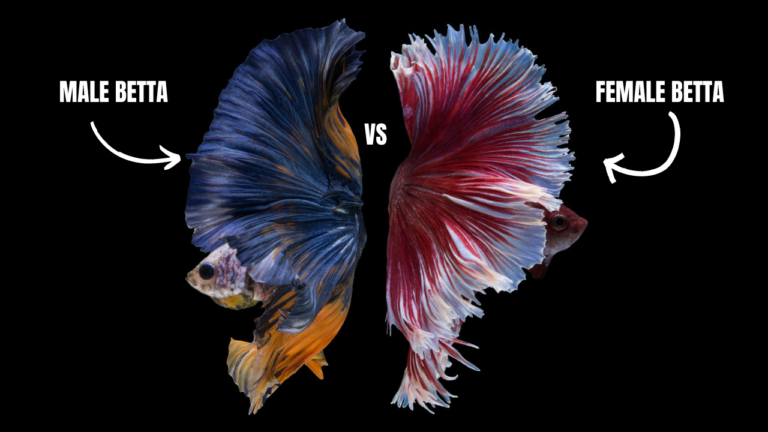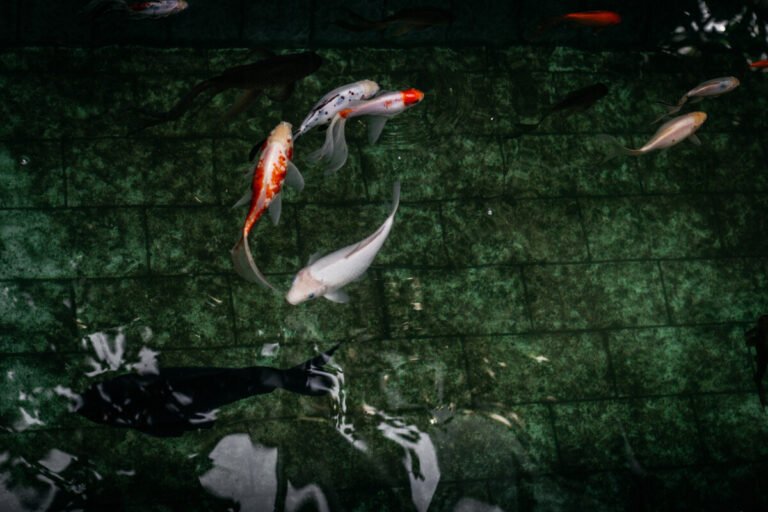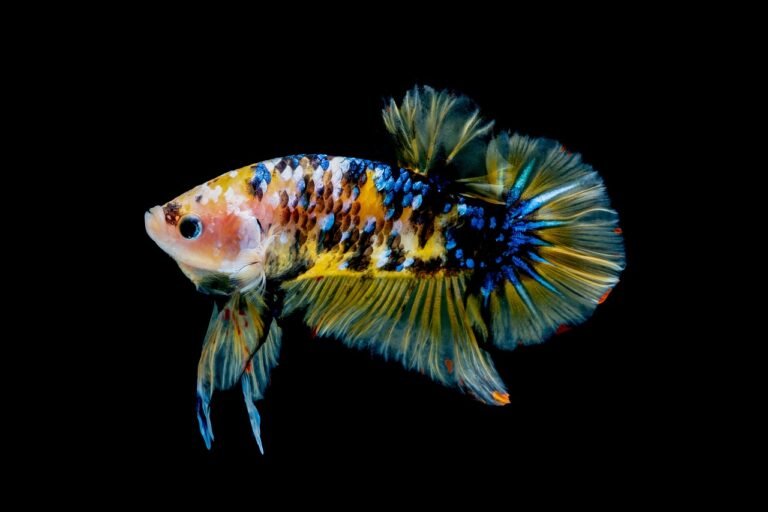Betta fish breeding can be one of the most rewarding experiences for any aquarium hobbyist. These colorful and captivating creatures not only add beauty to your underwater world but also give you a chance to witness the miracle of life unfolding right before your eyes. Whether you are an experienced breeder or just starting out, learning how to successfully breed bettas is a journey that requires patience, commitment and deep knowledge about these amazing animals.
This complete guide will take you through everything you need to know in order to become a professional betta fish breeder. Starting from setting up the perfect breeding environment all the way down to taking care of siamese fighting fry, we shall cover each step so that by the end of it all, you will have what it takes to keep healthy community tanks full of thriving bettas.
So grab your aquarium essentials and let’s dive into this fascinating world of betta fish breeding!
Understanding the Breeding Behavior
Before you start on this journey, it is important that you understand some unique behaviors exhibited by these fishes during their reproductive process. Bettas are known for being territorial and aggressive but when they enter into breeding season things change dramatically.
There is an interesting courtship ritual among bettas which involves building bubble nests as well as flaring fins and dancing around each other. The male fish creates a foamy nest at the top surface of water using its saliva mixed with air bubbles. This serves as a safe house for fertilized eggs until they hatch into fry.
On her part, females play a very critical role in ensuring successful reproduction takes place. She chooses a partner based on his bright colors, good health status and ability to make nice looking bubble nests among other things. After completing courtship dance together with male who has been selected; she releases her eggs while he fertilizes them simultaneously during a short embrace.
Understanding such complex behaviors will not only make you love these creatures more but also help in designing an environment that meets their natural needs.
Setting Up the Breeding Tank
Creating the right breeding tank is the first step towards successful betta fish breeding. A good design should provide suitable conditions for both parents and safety of fry.
Here are some things to consider when setting up your own breeding tank:
Tank Size: Aim for a 5-10 gallon tank. This will give enough space for the pair as well as their babies while making it easy to maintain cleanliness.
Water Parameters: Bettas prefer slightly acidic warm water with temperature ranging from 78°F to 82°F (25.5°C – 27.8°C) and pH levels between 6.5pH – 7.5pH. Keep quality high by doing regular partial water changes using a dechlorinator.
Substrate & Decorations: Use fine-grained substrate like aquarium soil or sand so that fry do not swallow large particles. Provide lots of live plants or artificial decorations which can act as hiding places and stimulate natural behavior among them.
Filtration and Aeration: Put in a sponge filter or an air-driven filter to provide gentle water movement and oxygenation without strong currents that can disturb the bubble nest or fry.
Lighting: Betta fish prefer low lighting conditions. Use a low-wattage aquarium light or natural daylight to mimic their natural environment.
By creating a setup that mimics their natural habitat, you will increase the chances of successful breeding and ensure the health of your betta fish and their babies.
Identifying a healthy breeding pair
Selecting healthy and compatible breeding partners is essential for successful betta fish breeding. A good match not only increases the likelihood of successful spawning but also contributes to overall offspring health and vigor.
Consider the following factors when choosing a pair:
Age and Size: Choose mature bettas that are at least 6 months old and have reached their full adult size. This ensures they are physically and sexually mature enough for breeding.
Health and Appearance: Look closely at each fish for signs of good health such as bright colors, clear eyes, active swimming behavior etc. Avoid those with visible deformities, disease symptoms or torn fins etc.
Compatibility: Although known for its aggressive nature, a suitable couple should show little aggression towards each other. Look out for courtship behaviors like bubble nest building and fin flaring etc.
Genetic Diversity: To promote genetic diversity and prevent inbreeding it is advisable to select pairs from different sources or bloodlines etc.
By picking out healthy compatible breeders you will increase chances of successful spawning while ensuring overall well-being of offspring too.
The Breeding Process – Courtship and Spawning
Once you have set up the breeding tank and chosen an appropriate pair, it’s time to watch the fascinating courtship & spawning process unfold before your eyes!
Usually this dance starts with male betta constructing an elaborate bubble nest on top surface of water which acts as safe house for fertilized eggs & subsequent fry. He then performs intricate fin flaring displays and dances to attract female’s attention.
If she is ready, she will approach him and they will briefly embrace each other during which time she releases her eggs. The male fertilizes them by wrapping his body around her and discharging milt (sperm).
After spawning is over, the male carefully collects all fertilized eggs in his mouth and puts them into a bubble nest. He guards it closely, ensuring that enough oxygen reaches them as well as protecting from any harm.
It should be noted that breeding can be stressful for both male and female bettas. To minimize stress levels while maximizing their welfare, it is advisable to remove the female from the breeding tank after spawning so as not to provoke aggression and allow the male concentrate on taking care of eggs & fry.
Recognizing signs of a pregnant Betta fish
Unlike some other species, bettas do not show typical signs of pregnancy but there are still subtle clues which may help you identify whether your female is gravid (carrying eggs).
One of the most evident signs is a swollen belly or abdomen. When female betta fish are carrying eggs, their bellies will appear larger and rounder than usual. In some cases, this can be very pronounced.
Another thing you might notice is that she starts acting differently. Gravid females tend to become more lethargic and may spend a lot of time resting or hiding. They also often have a decreased appetite because their bodies are using all their energy to grow those eggs.
However, not every fish with a big stomach is pregnant! Some females bloat for other reasons like overfeeding or digestive problems so watch closely for any other signs of egg development.
If you think your female betta might be pregnant, make sure to give her an appropriate breeding tank and introduce her to a compatible male. Taking care of them properly during this fragile stage can help increase successful spawning rates as well as keep both momma-to-be and babies healthy!
Hatching Betta Fish Eggs
Once the male has released his sperm into the bubble nest, it’s all up to nature. The incubation period for betta fish eggs usually lasts between 24-36 hours (1 or 1.5 day) during which time dad will guard them with his life.
When they hatch out of their shells you’ll see little wiggling fry swimming around outside the nest. At first they’re still attached by an umbilical cord-looking thing called an egg sac which provides nutrients while they’re too small to eat.
It’s important that you maintain perfect water conditions at this point because now things get really tricky! Do partial water changes if there’s any debris or unfertilized eggs but be careful not to disturb the nest or fry themselves. Keep temperature, pH level and ammonia levels stable so babies survive!
Raising Baby Betta Fish
Caring for baby bettas (fry) requires patience, dedication and understanding their unique needs – these little guys are delicate! They need lots of care and attention if you want them to grow up healthy.
During the first few weeks of their lives, betta fry are extremely fragile. You have to create an environment that is perfect for them:
Separate Grow-out Tank: Once they start swimming freely, move them into a separate tank with gentle filtration, dim lighting and plenty of hiding places.
Water Quality: Keep the water clean by doing frequent partial water changes and monitoring ammonia, nitrite and nitrate levels closely as they can be affected by even small amounts of these chemicals.
Feeding: Since their mouths are so tiny they need special food like newly hatched brine shrimp or micro-worms or high-quality fry powders. Feed them many times a day but only small amounts each time so you don’t foul up the water.
Tank Maintenance: Clean out any uneaten food or waste regularly to keep good water quality. Do partial water changes every couple days using fresh dechlorinated water.
As the fries grow, you will need to increase their living space and adjust their diet to fit their growing size. You may have to separate aggressive individuals or those with significant differences in size to prevent bullying or cannibalism.
With proper care and attention, your betta fries will thrive and become healthy adults full of life that are ready for their own breeding adventures.
Tips For Successful Breeding
Breeding betta fish can be both rewarding and challenging. Here are some tips to help you succeed:
- Research and Preparation: Before you start breeding, make sure you know everything about breeding requirements, betta fish behavior, and care. Proper preparation is essential if you want them to breed successfully in an ideal environment.
- Quarantine and Acclimate: Always quarantine new bettas before introducing them into your breeding setup. This prevents diseases from spreading among the fish while also helping them adapt well to their new surroundings.
- Proper Nutrition: Feed them a balanced diet containing proteins of high quality as well as other necessary nutrients. Healthy nourished bettas are more likely to breed successfully and produce strong offspring.
- Patience and Observation: Breeding requires patience coupled with keen observation skills because it involves waiting for courtship signs between pairs followed by spawning events plus any other issues that might arise during this time should be addressed immediately.
- Separate Breeding Tanks from Grow-out Tanks: Have different tanks for each stage; one tank where they will breed then another tank where fry shall be raised until they become adults capable of reproducing themselves too.
- Water Quality Management: Keep checking water quality regularly through partial water changes done frequently alongside effective filtration systems which ensure clean safe water always. Poor conditions can lead to illnesses hence increased death rates among these fishes thus making it important to always maintain good hygiene practices when dealing with such delicate creatures like bettas.
- Genetic Diversity: Introduce new pairs sourced from various places or bloodlines so as not only avoid inbreeding but also promote healthier populations overall by increasing genetic variability within them.
By following these tips and being committed to giving the best care possible, you will increase your chances of successfully breeding bettas and witnessing their amazing reproductive cycle.
Common challenges in betta fish breeding
Betta fish breeding can be quite challenging despite its rewarding nature. Understanding common problems encountered during this process can help one overcome them thus ensuring success throughout the entire journey.
Aggression and Territoriality: Bettas are known for their aggressive behavior which tends to escalate when they start mating. To minimize aggression, provide enough hiding spots then separate pairs after spawning while closely monitoring how they interact with each other.
Egg Infertility and Fungal Infections: Eggs that fail to fertilize or get infected by fungi may not develop properly thereby compromising both their own health as well as that of fry produced from such eggs. Always maintain clean water conditions; remove any unfertilized eggs immediately then use methylene blue or other antifungal treatments if need be.
Fry Cannibalism: Sometimes either male or female parents may eat up their own babies especially if stressed out, living in dirty water or lacking suitable hiding places. Therefore ensure there is enough cover for them all plus maintaining optimal environmental conditions; otherwise consider separating parents from offspring until they grow big enough not to be seen as food anymore.
Stunted Growth and Deformities: Poor nutrition, genetic factors or unfavorable aquatic environments could lead to retarded growth rates among fry resulting in various physical abnormalities being exhibited by affected individuals. Provide balanced diets; keep stable water parameters while culling severely deformed/unhealthy ones so as to foster good health within the population at large.
Disease Outbreaks: Betta fish can get different diseases like fin rot, velvet disease, and bacterial infections. Keep new fish in quarantine, ensure good water quality always and be ready to treat any outbreak of diseases with the right drugs or remedies.
By being proactive and addressing these common challenges, you’ll increase your chances of successfully breeding betta fish and raising healthy, vibrant offspring.
Takeaways
Breeding betta fish is an interesting journey that needs patience, commitment and deep knowledge about these beautiful creatures. This complete guide will help you understand how to breed bettas successfully so that you can become a successful breeder too.
Success in breeding bettas is not only measured by the number of fry produced but also by creating an environment where they can grow into their full potential as vibrant fish with unique personalities. Therefore, do not fear challenges; instead celebrate them because through such moments we get closer to nature’s miracles which are life changing events themselves.
As you embark on this exciting adventure, remember to share your experiences and knowledge with fellow betta fish enthusiasts. Together, let us preserve these wonderful aquatic wonders for future generations who may never have seen anything like them before and do comment and let our readers know the challenges you faced in breeding process. !

